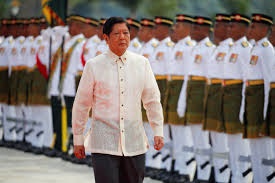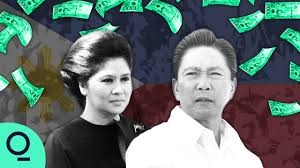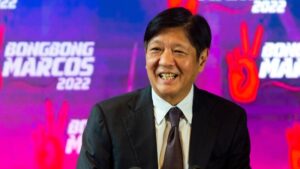
The Philippines is once again at the epicenter of a geopolitical and historical debate, stirred by the presence of a familiar, yet eternally controversial, family name: Marcos. With the presidency of Ferdinand “Bongbong” Marcos Jr., the long-simmering questions surrounding the Marcos family’s wealth—particularly the legendary and heavily disputed “Marcos Gold”—have been forcefully revived. This resurgence of scrutiny coincides with an extraordinary and curiously timed commitment of investment from Switzerland, a nation long intertwined with the family’s financial narrative. The influx of approximately Php310.74 billion into crucial Philippine sectors like renewable energy and digital infrastructure presents a complex riddle: Is this a legitimate testament to renewed diplomatic and economic trust, or does it signal a sophisticated maneuver to repatriate long-hidden assets?
The shadow of the past, specifically the use of secretive Swiss financial architecture, casts a long and undeniable pall over the current administration’s success.
The Sandiganbayan’s Verdict and the Swiss Connection
To understand the present debate, one must first look back at the judicial findings that form the legal basis of the “ill-gotten wealth” narrative. In a landmark ruling by the Sandiganbayan Fifth Division, it was established that former President Ferdinand Marcos Sr. and former First Lady Imelda Marcos were the principal beneficiaries of seven specific Swiss foundations. These entities—named Maler Establishment, Trinidad Foundation, Rayby Foundation, Palmy Foundation, Vibur Foundation, Aguamina Foundation, and Avertina Foundation—were found to have been utilized by Imelda Marcos to covertly transfer public funds to Switzerland and disguise them as private wealth.
This judicial determination led to Imelda Marcos’s 2018 conviction on seven counts of graft. She was sentenced to a term of imprisonment and perpetually disqualified from holding public office, a verdict that remains under appeal before the Supreme Court. The core legal finding hinged on the fact that these foundations were conduits for assets acquired through illicit means and were demonstrably disproportionate to the Marcos couple’s legal income during their tenure.
Yet, amidst the legal proceedings, a dramatic and provocative statement attributed to Imelda Marcos took root in public consciousness, fueling the mystique of the family’s hidden wealth: “Do not kill me, I am the only one who knows where the gold in Switzerland is hidden.” This purported utterance, whether literal or purely metaphorical, transformed the legal case into the enduring legend of the “Marcos Gold.”
Deciphering the Marcos Gold Mystery

For decades, the existence, origin, and exact volume of the so-called Marcos Gold have been central to investigative journalism, historical inquiries, and political discourse. The Marcos family’s long-standing defense has been that the gold and substantial fortune were legitimate personal acquisitions made by Ferdinand Marcos Sr. prior to his presidency, allegedly resulting from successful legal practice and business transactions in the 1940s and 1950s.
However, this personal-wealth claim has been repeatedly contradicted by government agencies, most notably the Presidential Commission on Good Government (PCGG), the body established in 1986 to recover the Marcoses’ unlawful assets. The PCGG’s mandate and numerous subsequent court victories have categorized a significant portion of the overseas deposits, particularly those linked to the Swiss foundations, as ill-gotten wealth—accumulated through systematic corruption, cronyism, and abuse of power during the Martial Law era.
The PCGG estimates of the total stolen wealth range between US$5 billion and US$10 billion, with a substantial portion hidden in international banks, including those in Switzerland. The crucial questions remain unanswered: Is the Marcos Gold a literal physical treasure, a metaphor for the immense financial assets stashed abroad, or both? And more pertinently, who controls the keys to the unrecovered portions today?
Switzerland: From Banking Haven to Economic Partner
Switzerland has historically been synonymous with banking secrecy, providing a safe and discrete harbor for global wealth, a characteristic that made it the ideal destination for the Marcoses’ controversial foundations. The nation’s sudden and sizable pivot to commit nearly Php310.74 billion in investment to the Philippines—targeting high-priority sectors like renewable energy and digital infrastructure—is therefore a development of immense significance. For a country traditionally cautious in its overseas capital deployment, this financial commitment represents a major diplomatic and economic shift.
For optimists, the timing is merely coincidental, a result of President Ferdinand Marcos Jr.’s successful foreign policy and a reflection of the Philippines’ new, investment-friendly environment. They point to the administration’s aggressive economic roadmap and the specific policies designed to attract foreign capital.
Yet, for skeptics and critical analysts, the Swiss investment is seen through a different, more opaque lens: as a potential “covert withdrawal” or a mechanism for “strategic laundering.” This theory posits that the immense, suddenly available Swiss capital is not entirely new external money but rather the Marcos-linked assets being quietly reintroduced into the Philippine economy through legitimate-looking investment vehicles and bilateral agreements.
Investment Versus Withdrawal: The Economic Crossroads

A closer examination of the Philippine government’s current policy strongly supports the argument for a legitimate investment surge. The Marcos Jr. administration, through policies like Executive Order No. 18, has aggressively streamlined the approval process for “strategic investments.” This has visibly enhanced the Philippines’ appeal to foreign direct investors, particularly those interested in the rapidly expanding green and digital sectors. The fact that the Swiss investment is concentrated in renewable energy is consistent with global climate finance trends and the Philippines’ strategic energy transition goals.
However, the timing of the massive capital injection—occurring during the administration of the son of the president who established the infamous Swiss foundations—is too potent a coincidence to dismiss. The coincidence provokes a fundamental, unsettling debate:
-
Economic Redemption: Is the family using the assets—regardless of their provenience—to fund national development projects, thereby transforming what was once labelled “ill-gotten” into a source of national progress? This narrative suggests a final, high-stakes attempt at rehabilitating the family’s legacy through economic performance.
Strategic Laundering: Is the family leveraging its renewed political power and diplomatic channels to facilitate the phased return of sequestered or frozen wealth? Under this hypothesis, the investment deals serve as an immaculate facade, allowing the assets to flow back into the country as foreign capital, escaping the lingering stigma of corruption.
The Power of Diplomacy and the Brand of Continuity
President Marcos Jr.’s diplomatic efforts and international engagement, characterized by state visits and participation in global economic forums, have undeniably played a role in restoring foreign investor confidence. His administration’s economic blueprint, focusing on infrastructure and digital transformation, aligns neatly with the priorities of developed nations like Switzerland.
Furthermore, PBBM is adept at leveraging the “soft power” of his family’s name, framing it not as a source of controversy but as a brand of continuity and political stability. This influential positioning, analysts suggest, may be the critical “ace” in dealing with the very Swiss financial institutions that once held his family’s secrets. By presenting a stable, investment-ready Philippines, he may be creating the optimal environment for the wealth narrative to finally evolve.
A Call for Accountability and National Benefit
Ultimately, the technical categorization of the Php310.74 billion—whether as pure, fresh foreign investment or as a repatriated portion of the mysterious Marcos Gold—pales in comparison to the primary challenge facing the Filipino nation: ensuring that these vast resources are genuinely directed toward public benefit.
The true test lies in governance and integrity. If the capital is used transparently to elevate the standard of living, address the energy crisis, and bridge the digital divide, it could mark a redemptive chapter in the Philippines’ history. Conversely, should the funds dissolve into familiar patterns of avarice and corruption, history will not only repeat its scars but deepen them.
The enduring spiritual truth rings loudest in this context: as the Gospel of Matthew states, “For where your treasure is, there your heart will be also.” If the heart of this immense wealth—regardless of its origin—is committed to the welfare of the Filipino people, it could inaugurate a new era of genuine progress and unity. The true Marcos Gold, the article concludes, is not a hoard of metal in Swiss vaults; it resides in the collective hope and unwavering pursuit of justice, truth, and national development by the Filipino citizenry. This ongoing pursuit remains the most valuable asset the country possesses.





